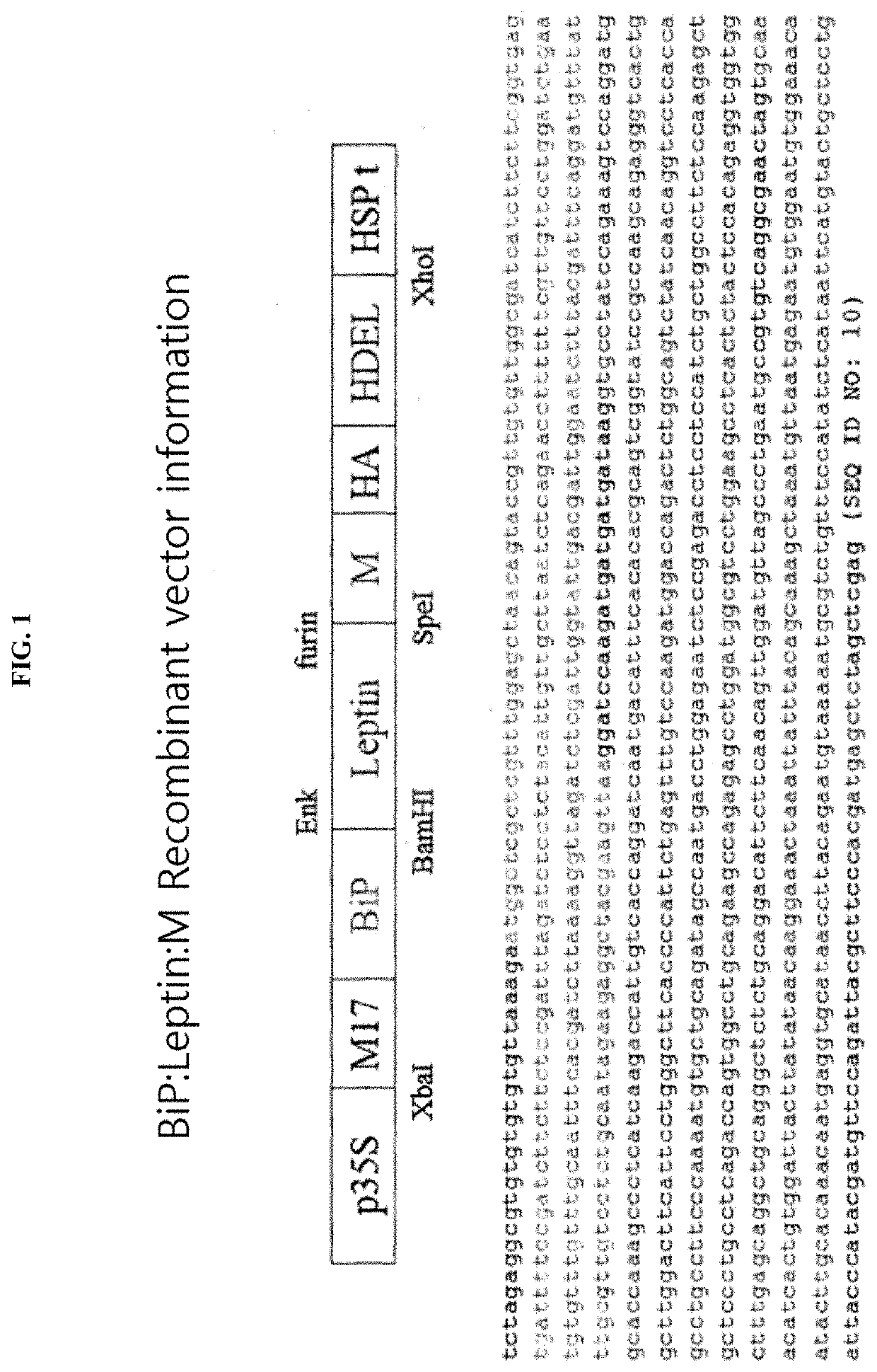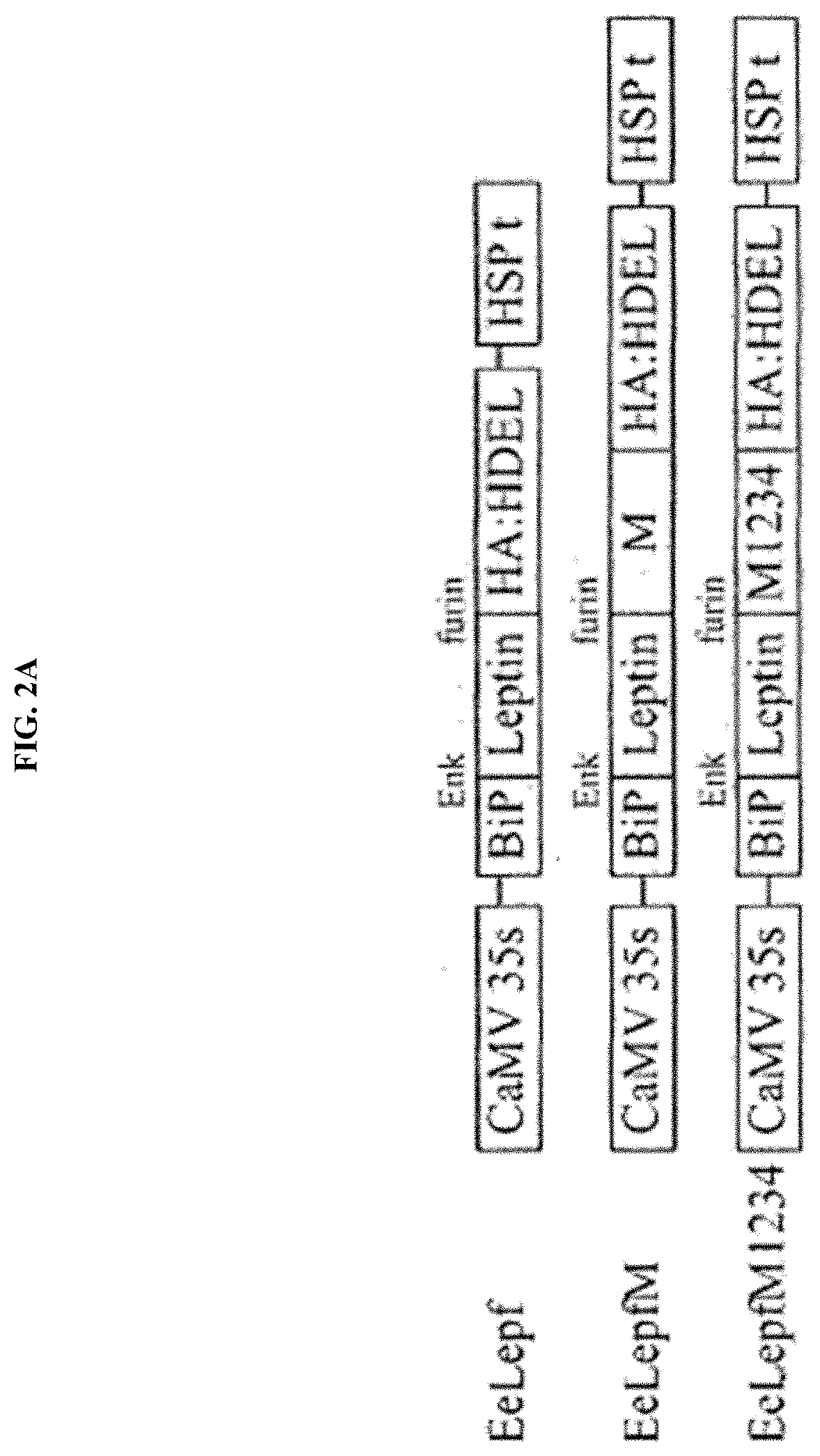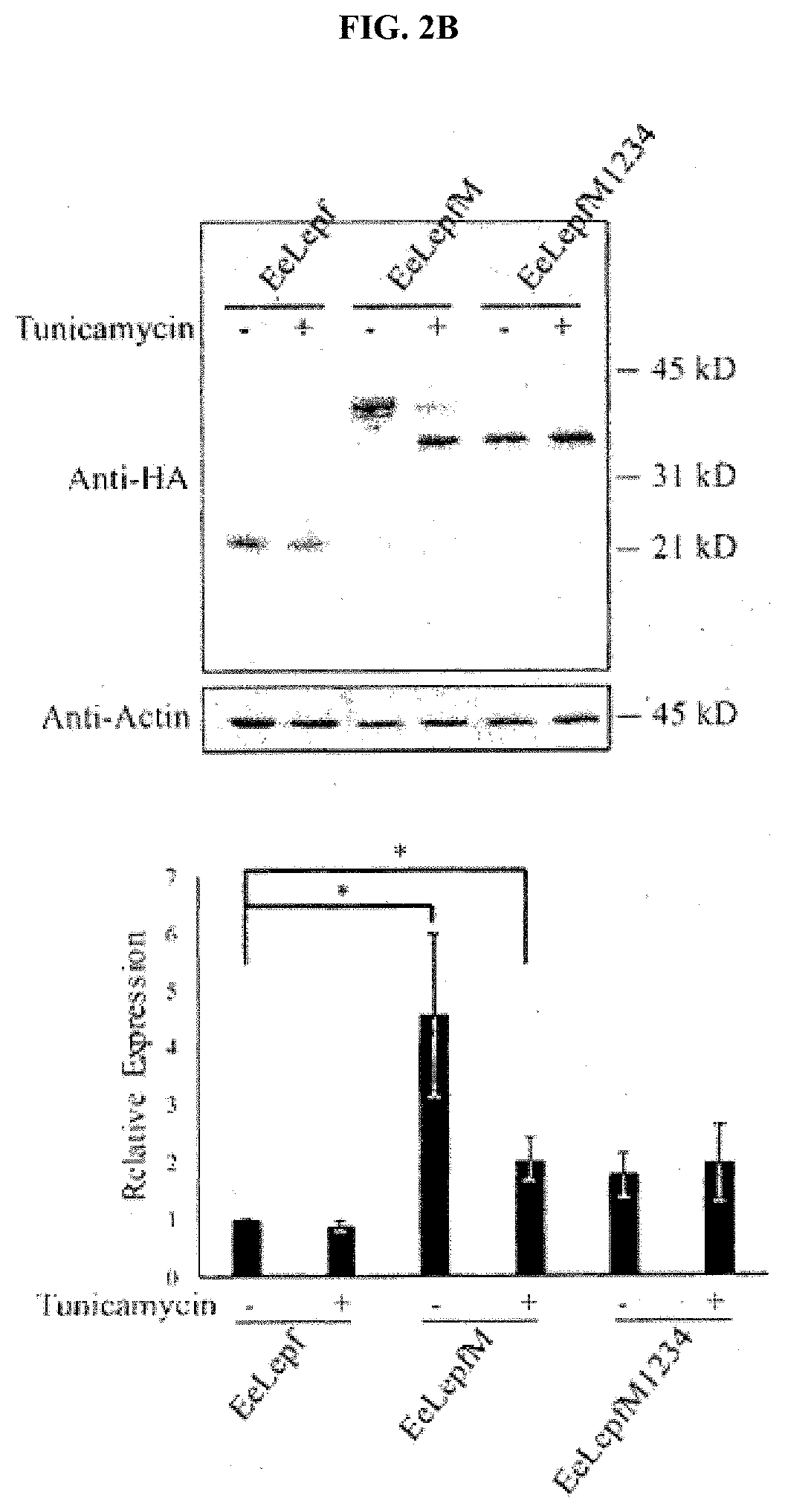Recombinant vector for expressing target protein in plant cell
a plant cell and target protein technology, applied in the direction of peptides, peptide/protein ingredients, peptide sources, etc., can solve the problems of affecting protein stability, glycosylation, and the relative low level of protein expression in plant cells, so as to increase the expression level of a target protein, and achieve the effect of facilitating the production of useful proteins using plants
- Summary
- Abstract
- Description
- Claims
- Application Information
AI Technical Summary
Benefits of technology
Problems solved by technology
Method used
Image
Examples
reference example 1
t Materials
[0081]Arabidopsis (Arabidopsis thaliana ecotype, Col-0) plants were grown on B5 plates in a growth chamber at 20° C. to 22° C. under a 16 h / 8 h light / dark cycle. Leaf tissues from 2-week-old plants were used for protoplast isolation.
reference example 2
n
[0082]The mature peptide region of mouse leptin cDNA (NM_008493.3) was used. A DNA fragment (SEQ ID NO: 1) encoding an M domain was synthesized by repetitive PCR, and mutants of the N-glycosylation (Asn-Gln substitution) were generated by PCR-based site-directed mutagenesis. A DNA fragment (SEQ ID NO: 11) encoding aprotinin was produced by chemical synthesis (Bioneer, Daejeon, Korea). Enterokinase and furin cleavage sites were included in the primer used for leptin amplification (5′-GGATCCAAGATGATGATGATAAGGTGCCTATCCAGAAAGTCCAGGAT-3′ (SEQ ID NO: 18)). AHA epitope and an ER retention signal HDEL were introduced using the primers used for amplification of the M domain. PCR conditions were as follows: 94° C. for 5 minutes, (94° C. for 30 seconds, 52° C. for 1 minute, and 72° C. for 30 seconds) repeated 30 times, 72° C. for 7 minutes. The primer sequences used are summarized in Table 1 below:
TABLE 1 SEQIDPrimer NameSequence (5′ to 3′)NO.BamHI-Ek-GGATCCAAGATGATGATGATAAGGTGCCTA18leptin-FT...
example 1
ion of Recombinant Vector for M Domain Fusion
[0090]To highly express a target protein in a plant, a recombinant vector for plant transformation which comprised a gene encoding a fusion protein in which the M domain of human CD45 was fused to the target protein was constructed. As the target protein, Leptin in which an enterokinase cleavage site and a furin cleavage site were fused to the N-terminal and the C-terminal, respectively (hereinafter referred to as “eLepf”) was used. A CaMV 35S promoter was used in the vector pCAMBIA1300 as the recombinant vector, which is a commonly used vector, an M17 sequence (SEQ ID NO: 3) was added to increase the amount of protein synthesized, the target protein was transferred to an endoplasmic reticulum using a genomic DNA sequence (SEQ ID NO: 4) corresponding to a signal peptide of BiP (chaperone binding protein), and HDEL (His-Asp-Glu-Leu) was added to the C-terminal to be retained in the endoplasmic reticulum so that the final target protein cou...
PUM
| Property | Measurement | Unit |
|---|---|---|
| time | aaaaa | aaaaa |
| temperature | aaaaa | aaaaa |
| temperature | aaaaa | aaaaa |
Abstract
Description
Claims
Application Information
 Login to View More
Login to View More - R&D
- Intellectual Property
- Life Sciences
- Materials
- Tech Scout
- Unparalleled Data Quality
- Higher Quality Content
- 60% Fewer Hallucinations
Browse by: Latest US Patents, China's latest patents, Technical Efficacy Thesaurus, Application Domain, Technology Topic, Popular Technical Reports.
© 2025 PatSnap. All rights reserved.Legal|Privacy policy|Modern Slavery Act Transparency Statement|Sitemap|About US| Contact US: help@patsnap.com



